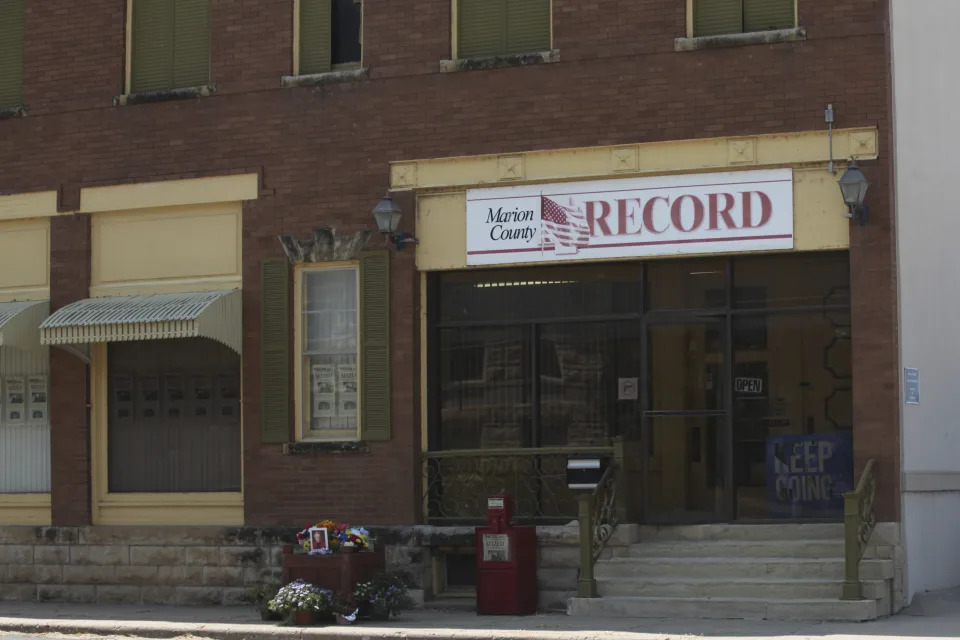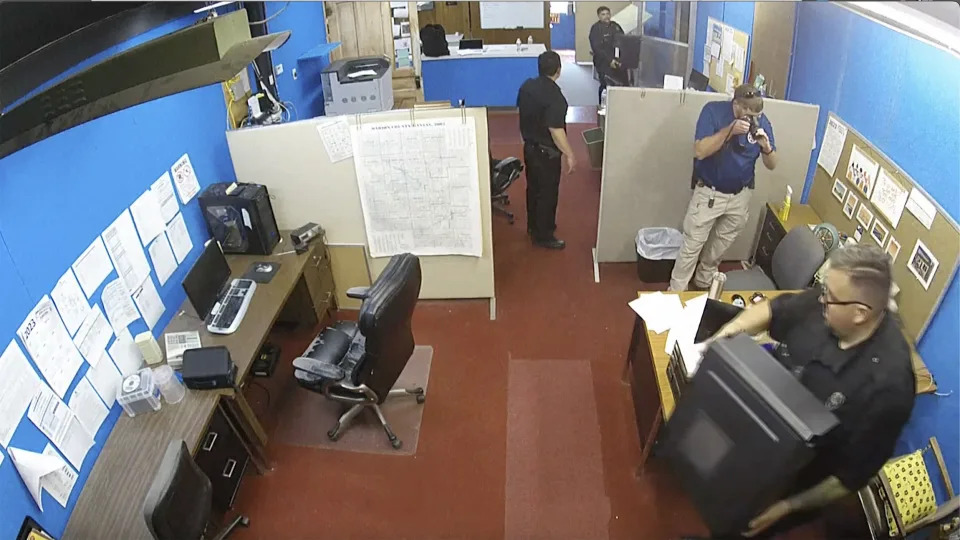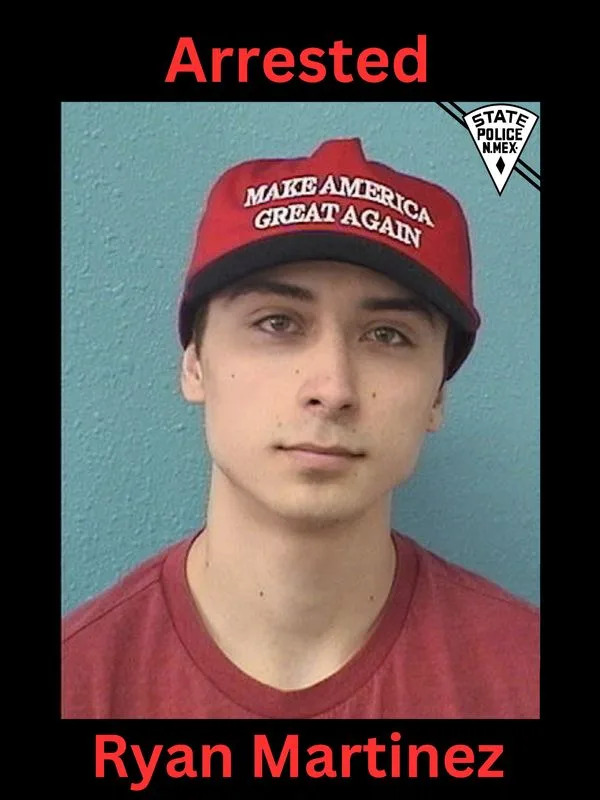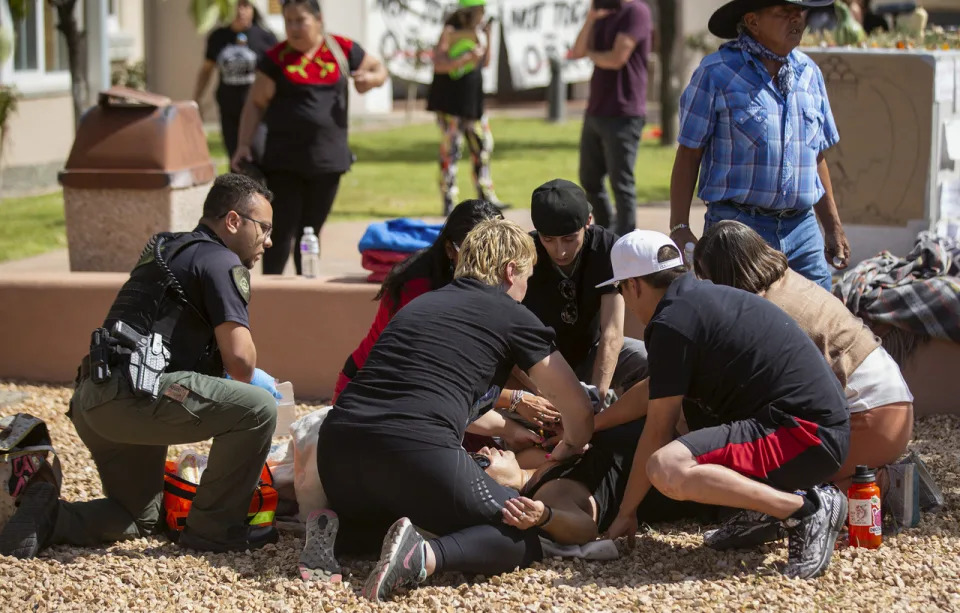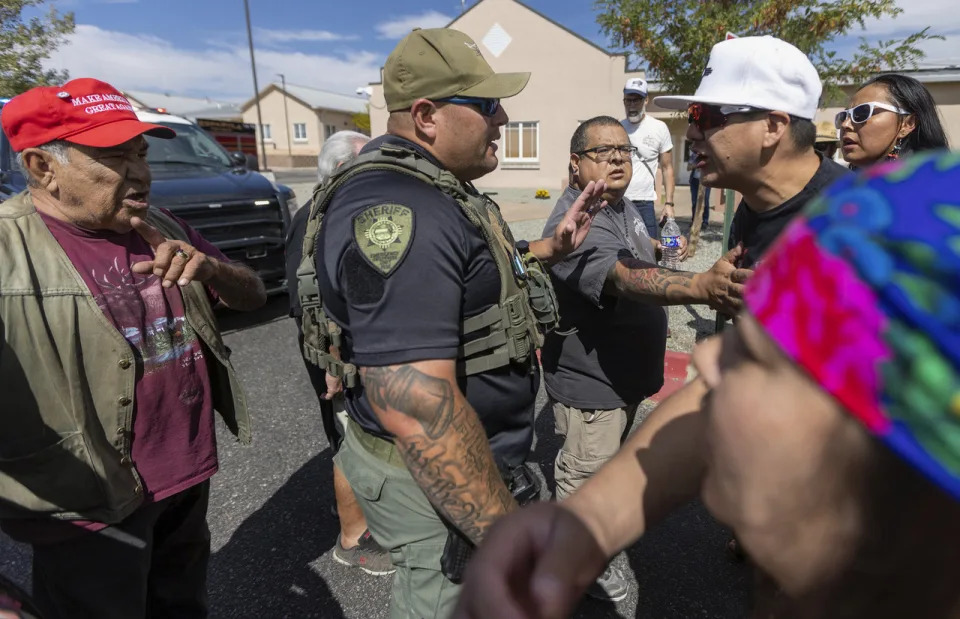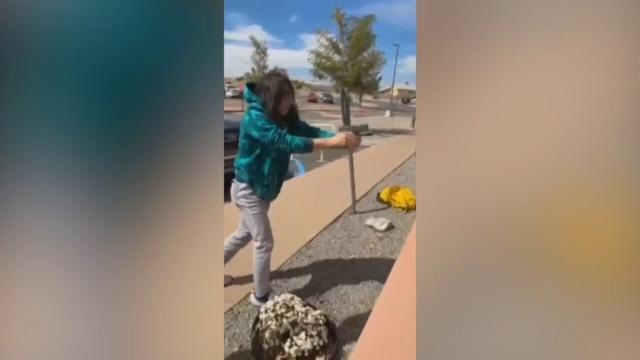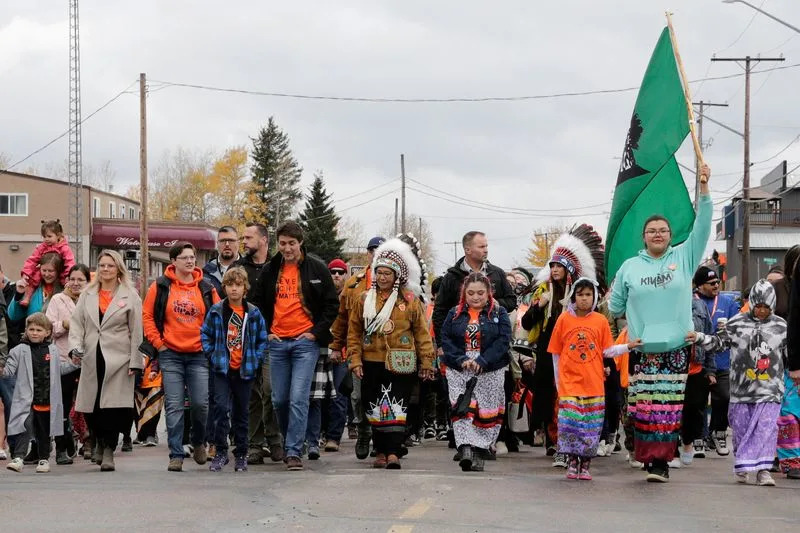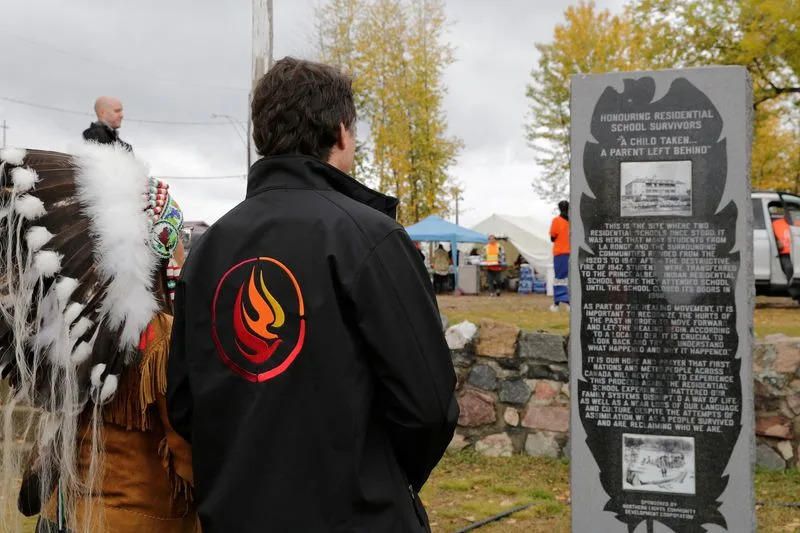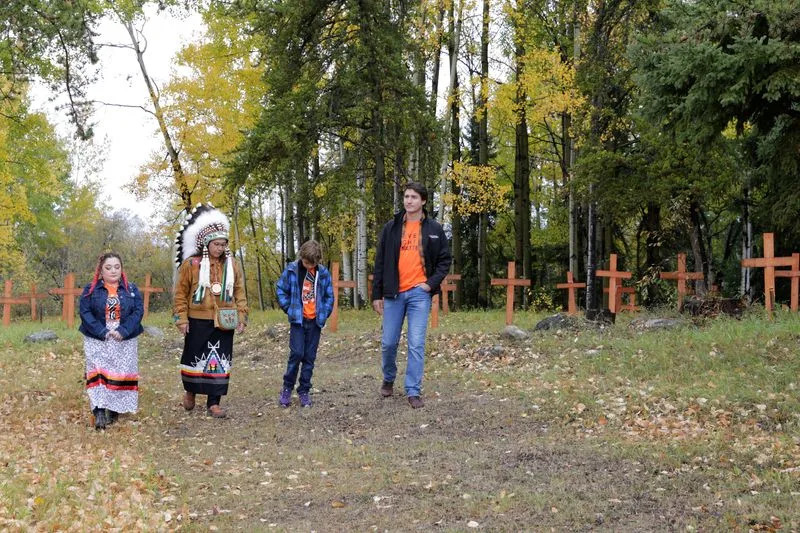Robert Channick, Angie Leventis Lourgos, Chicago Tribune
Updated Fri, September 29, 2023



Trent Sprague/Chicago Tribune/TNS
The United Auto Workers expanded its strike to Ford’s Chicago Assembly Plant, instructing thousands of workers on the city’s Southeast Side to walk off the job Friday in the union’s ongoing labor dispute with the Big Three automakers.
In an online address to members Friday morning, UAW President Shawn Fain called on the Chicago Ford plant and a GM assembly plant in Michigan to join more than 18,000 other autoworkers at plants and parts distribution centers nationwide on the picket line as the union seeks a new four-year contract.
“We’re on strike until they get this right,” said Chris Pena, president of UAW Local 551, which represents assembly line workers at the Chicago Ford plant.
The Chicago Ford plant has about 4,600 workers on three shifts making the Ford Explorer, Lincoln Aviator and Police Interceptor SUVs, the automaker said Friday. In 2019, Ford spent $1 billion to transform the nearly century-old Torrence Avenue facility, which phased out production of the Taurus sedan to focus on building SUVs.
The Explorer, which is made exclusively at the Chicago Assembly Plant, is among Ford’s best-selling vehicles.
Ford also employs about 1,000 hourly workers at a nearby stamping plant in Chicago Heights who are members of UAW Local 588. Those workers have not been called to strike by the union.
The UAW represents 146,000 members across the U.S. Earlier this month, the union directed about 13,000 workers to walk off the job and onto the picket line at a GM plant in Missouri, a Stellantis plant in Ohio and a Ford factory in Michigan.
Last week, Fain gave marching orders to 5,600 parts and distribution workers at 38 locations across 20 states to walk off the job, including 92 workers at a GM parts distribution center in Bolingbrook and a Stellantis facility with 95 employees in Naperville.
With the addition of nearly 7,000 workers Friday, the expanded strike against the Big Three automakers includes more than 25,000 UAW members at 43 facilities in 21 states.
The union is seeking pay increases, shorter workweeks and improvements to retiree pensions and health care plans amid record profits for the Big Three automakers, among other demands.
Ken Thomas said when he began working at Ford’s Chicago Assembly Plant 45 years ago, he and his co-workers were well-paid.
“Unlike now,” Thomas said from the picket line Friday, in the shadow of the plant’s sign advertising the iconic blue and white Ford logo. “The pay is probably less than what I made then,” he said, accounting for cost-of-living increases.
The 66-year-old from Merrillville, Indiana, said he’ll probably be fine financially. But he’s worried that “it’s rough” for new employees — particularly the younger generations as prices of necessities such as housing and groceries continue to go up.
“What we’re fighting is actually no different than what our forefathers fought in the ’30s and ’40s. And it’s a wage gap,” he said. “The problem is that it’s way out of control now.”
Thomas, who began decades ago as an assembler on the engine line and now works as an inspector, was one of about five dozen strikers protesting outside the plant Friday morning, some holding signs declaring “Record profits record contract,” some wearing stickers stating “I don’t want to strike but I will.”
“It’s our time!” one striker yelled.
“Our time!” a crowd of union workers chanted back over the din of cars honking in solidarity as they drove by on Torrence Avenue.
Felicia Green, 56, a final line inspector at the plant, noted the historic nature of the larger labor action, which marks the first time the UAW has called for a strike against all three automakers in the Detroit-based union’s 88-year history.
Green, who lives in Merrillville, said she has been working for Ford for 30 years, first at a plant in Rawsonville, Michigan, and later at Flat Rock, Michigan.
“I personally am inspired,” she said. “Because this is something we’ve never done. But today I had the courage to come over here and just be proud of what we’re doing, for the cause.”
Last week, Fain cited progress in negotiations with Ford in bypassing the automaker — and the Chicago plant — from additional walkouts. This week, it was a different story, with Stellantis the only automaker spared additional strike actions.
“Despite our willingness to bargain, Ford and GM have refused to make meaningful progress at the table,” Fain said. “What we win at the bargaining table depends on the power we build on the job. It’s time to use that power.”
During a news conference Friday, Ford President and CEO Jim Farley said the biggest stumbling block in UAW negotiations revolves around four EV battery plants in development — three in Kentucky and Tennessee that are a joint venture with a South Korean partner, and one the automaker is building itself in Michigan.
“What’s really frustrating is that I believe we could have reached a compromise on pay and benefits,” Farley said. “But so far the UAW is holding the deal hostage over battery plants.”
“Keep in mind, these battery plants don’t exist yet,” he said. “They’re mostly joint ventures and they’ve not been organized by the UAW yet because the workers haven’t been hired and won’t be for many years to come.”
Ford paused construction Monday of its $3.5 billion battery plant in Marshall, Michigan, amid the negotiations with the UAW.
Kumar Galhotra, president of Ford Blue, the automaker’s internal combustion division, said adding the Chicago Assembly Plant to a strike that two weeks ago shut down its plant in Wayne, Michigan, which makes the Bronco, will take an economic toll.
“If this continues, week after week, of course, it will have a substantial impact on our business,” Galhotra said.
Gerald Johnson, who heads up global manufacturing for GM, posted an online message to employees Friday morning after the expanded strike call, saying the automaker stands “ready and willing” to continue negotiating with the UAW on a new contract.
“Calling more strikes is just for the headlines, not real progress,” Johnson said. “The number of people negatively impacted by these strikes is growing and includes our customers who buy and love the products we build.”
Stellantis dodged any additional strike actions.
Fain said “significant progress” in negotiations with Stellantis “moments before” the strike announcements Friday included reinstating cost-of-living adjustments that were suspended during the Great Recession in 2009.
“We are excited about this momentum at Stellantis and hope it continues,” Fain said.
In February, Stellantis “indefinitely” idled its 60-year-old auto plant in Belvidere and laid off its last 1,200 union workers after halting Jeep Cherokee production amid dwindling sales. Repurposing the 5 million-square-foot plant likely remains part of any new labor agreement, with everything from a “megahub” parts distribution center to building EV battery components on the table, according to sources familiar with negotiations.
Stellantis said in a statement Friday that it has “made progress in our discussions, but gaps remain.”
As the picket line continued outside the Ford plant Friday afternoon, a driver passing by stopped and dropped off a case of water, expressing support for the strikers.
“A Good Samaritan,” said Frank Stottlemire, a quality operations system coordinator at the plant.
The Hobart, Indiana, resident has worked at Ford for 24 years, and his grandmother and several other family members were also employed by the company.
But he isn’t certain Ford will continue to be such a desirable workplace long term or engender the same worker loyalty in the future. He said newer employees don’t get a pension, a factor that’s helped retain him as an employee for two and a half decades.
“There’s no loyalty to something that doesn’t give you a pension,” he said. “You spend your life in here, and you don’t get a pension?”
Brittany Montgomery, 33, of Momence in Kankakee County added that she has a good job working at the plant, but it’s “a lot of wear and tear on your body.”
Both Stottlemire and Montgomery noted that inflation and the prices of gas, groceries and housing keep rising, without a commensurate wage increase.
“There’s a lot of people here who can’t afford to drive a Ford,” Montgomery added.
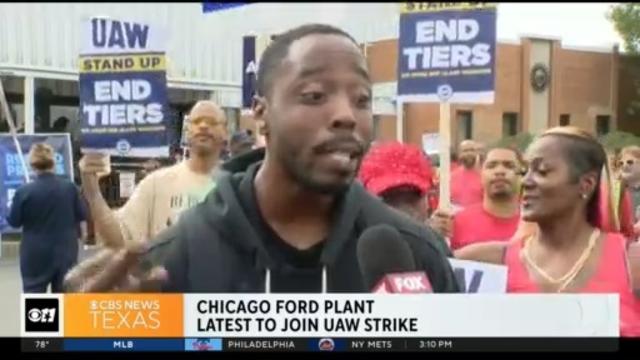
The United Auto Workers added thousands of members to the picket lines as it continues to negotiate a new contract with the Big Three automakers. Ford employees in Chicago are among the latest batch of autoworkers called to join the strike.
Ford: UAW holding contract negotiations 'hostage' over electric vehicle battery plants
Olivia Evans, Louisville Courier Journal
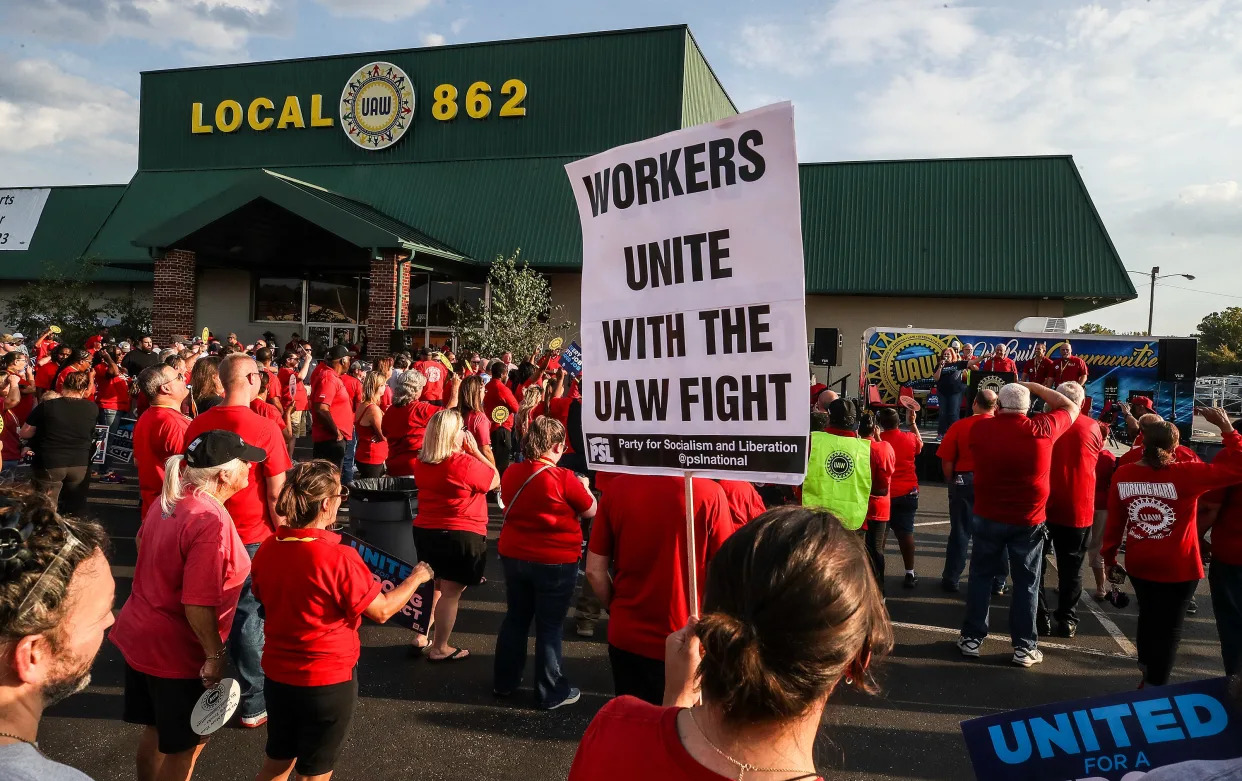
Hours after UAW International President Shawn Fain called thousands of additional workers to join a strike against the Detroit Three automakers, Ford held a media call, saying the "collective future is at stake” for both Ford and the UAW.
“We succeed or we fail together,” Ford CEO Jim Farley said.
Farley called the contract proposal Ford offered the UAW on Sept. 12 "historic" and said it would put its workers in the top 30% of all full-time manufacturers in the U.S. based on proposed wages and bonuses.
But the UAW has held the negotiations "hostage" over electric vehicle battery plant concerns, which are not directly related to this contract, Farley said.
“If the UAW’s goal is a record contract, they have already achieved this,” Farley said. “It is grossly irresponsible to escalate these strikes and hurt thousands of families.”
The autoworkers strike — against Ford, General Motors and Chrysler parent Stellantis — is the first UAW strike at Ford in nearly 50 years. As of noon Friday, more than 25,000 autoworkers were on strike across more than 40 plants nationwide.
The contract Ford proposed boosted wage increases by more than 20%, will restore cost-of-living allowances, eliminate wage tiers, offer layoff protections for permanent workers, made product commitments for all UAW plants in America, along with a handful of other things, according to a slideshow presented by Ford. The company has continued to negotiate and improve its offer since Sept. 12, a press release stated.
Throughout the negotiations, Fain has shared concerns that the transition to electric vehicles will cause harm and job loss for UAW workers, but Ford officials continue to deny this. Vice President, Americas Manufacturing & Labor Affairs, Ford Blue, Bryce Currie said that Ford is actually adding jobs to support its EV expansion and adding jobs to its non-electric vehicle plants.
Farley said the UAW is focusing on the company’s battery plants currently in development, such as the BlueOval SK Battery Park in Glendale. The plants are joint ventures and workers will have to decide about unionizing after they open.
“[Electric vehicles] have become a political football and it’s a shame,” Farley said.
In response to Farley's comments Friday, Fain said he doesn't know why "Jim Farley is lying about the state of negotiations … we are far apart on core economic proposals like retirement security and post-retirement healthcare, as well as job security in this EV transition, which Farley himself says is going to cut 40% of our members’ jobs.”
Farley said the future of the American auto industry and the industrial Midwest stands to be impacted the most as the UAW strike continues.
“That is why we are going to keep trying to reach an agreement with the UAW,” Farley said.
Ford has already felt significant impacts with both the Chicago Assembly and Michigan Assembly Plants down as strikes carry on at those facilities. On top of this, Ford suppliers nationwide are experiencing negative impacts, including hundreds of thousands of workers potentially facing layoffs in the near future as the strike continues, Liz Door, Ford's chief supply chain officer said.
"If this continues week after week, it of course will have a substantial impact on our company," said Ford Blue President, Kumar Galhotra.
Contact business reporter Olivia Evans at oevans@courier-journal.com or on Twitter at @oliviamevans_.
US auto strike expands with 7,000 more workers joining
Daniel AVIS
Fri, September 29, 2023
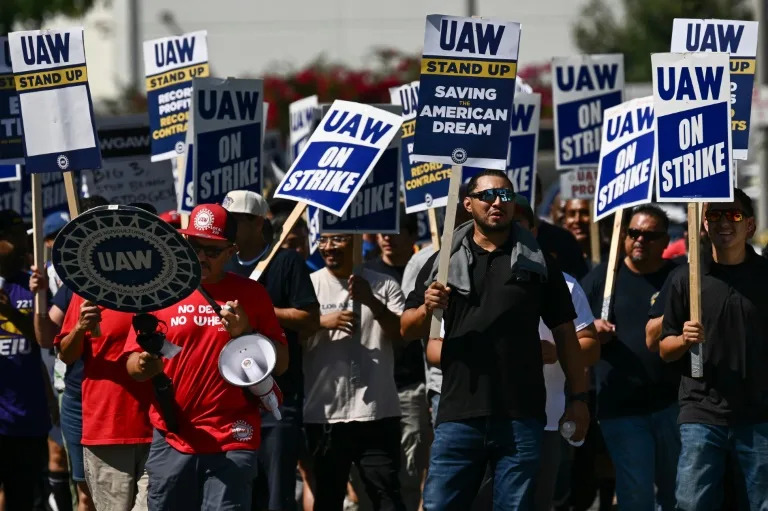
Members of the United Auto Workers Local 230 walk the picket line in front of the Chrysler Corporate Parts Division in Ontario, California, on September 26, 2023, in solidarity with "Big Three" autoworkers currently on strike (Patrick T. Fallon)
Another 7,000 members of the biggest US automobile workers' union on Friday joined its already major strike against the country's "Big Three" Detroit car manufacturers.
The latest walkouts leave a total of some 25,000 workers on strike in 21 states -- or around 17 percent of the United Auto Workers' membership.
UAW president Shawn Fain said the latest members to join the strike were at two plants in Chicago and Michigan, who downed tools at 1600 GMT.
"Our courageous members at these two plants are the next wave of reinforcements in our fight for record contracts," Fain said.
The industrial action is the first-ever joint strike at the major automakers -- Ford, GM and Chrysler producer Stellantis -- in a push for higher salaries and other improvements.
Fain noted however that he would not call on additional members to suspend their activity at Stellantis due to "significant progress" on several points currently under discussion.
Fain mentioned a mechanism for adjusting salaries to the cost of living as well as the right to strike in the event of a site closure or relocation announcement by the manufacturer.
The union has asked for a 40 percent pay raise over the next four-year contract, while the three companies have been offering raises of around 20 percent.
It's also been negotiating to represent workers at battery plants planned by Ford, which the auto giant has so far resisted.
UAW has used the targeted strike, which began on September 15, as a bargaining chip, ramping up the pressure on the three automakers in a bid to reach a deal.
- 'Holding the deal hostage' -
Ford President Jim Farley, who has remained relatively silent until now, came out strongly Friday against Fain's negotiating tactics.
"I believe we could have reached a compromise on pay and benefits, but so far the UAW is holding the deal hostage over battery plants," he told reporters.
Fain later hit back. "I don’t know why Jim Farley is lying about the state of negotiations. It could be because he failed to show up for bargaining this week, as he has for most of the past ten weeks," he said.
"If he were there, he’d know we gave Ford a comprehensive proposal on Monday and still haven’t heard back."
Ford recently paused construction at one of its plants, and warned it may have to scale back its ambitions for the project.
Stellantis said in a statement it has been "intensely working with the UAW to find solutions to the issues that are of most concern to our employees while ensuring the company can remain competitive."
"We have made progress in our discussions, but gaps remain," it said, adding it was committed to reaching "a fair and responsible agreement that gets everyone back to work as soon as possible."
- The strike gets political -
The strike has ramped up the significance of Michigan's swing state status in the 2024 presidential election.
Earlier this week, Joe Biden became the first sitting US president to stand on a picket line, joining UAW members in Michigan in a bold pitch for blue collar votes against likely election rival Donald Trump.
Wearing a UAW baseball cap, the Democrat used a bullhorn to tell red-shirted workers they deserved "a hell of a lot more than what you're getting."
Trump's Republican party is typically hostile toward unions, though is often able to pick up significant numbers of working class votes. Trump spoke at a non-union auto facility in the Detroit suburbs saying that he wants "a future that protects American labor, not foreign labor."
On Friday, Fain called Biden's visit a "historic day."
"The most powerful man in the world shows up for one reason only," he said. "Because our solidarity is the most powerful force in the world."
"When we stand together united in the cause of economic and social justice, there's nothing we can't do," he added.
UAW strikes spread to Chicago, Lansing as 7,000 more workers join the picket line
WGN - Chicago
Fri, September 29, 2023 at 3:18 PM MDT
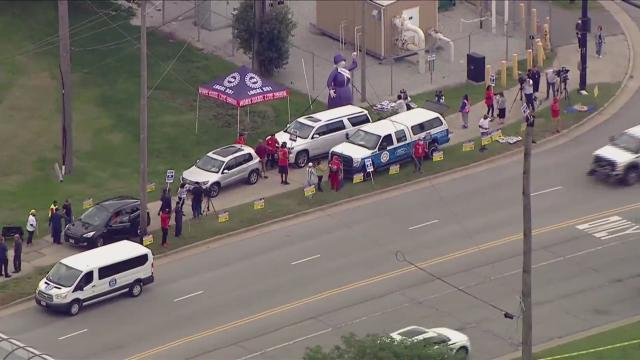
The United Auto Workers union says its two-week strike against Detroit automakers will spread to 7,000 more workers at a Ford plant in Chicago and a General Motors assembly factory near Lansing, Michigan.
UAW strike: Car workers escalate action, clouding US economy
Fri, September 29, 2023

A walkout targeting Detroit's Big Three started on 15 September
The United Auto Workers (UAW) union is expanding a strike at some of America's biggest car firms, sending the row over pay and benefits into its third week.
Union boss Shawn Fain said 7,000 more staff at Ford and General Motors factories are set to walk off the job.
The latest action did not target Stellantis, reflecting new momentum in those talks, he said.
Roughly 18,000 workers were already on strike in a dispute that has cast a cloud over the US economy.
US President Joe Biden and former President Donald Trump, who is running for re-election, both visited the Detroit area this week to address the issue, which comes as labour tensions simmer across the country.
The union opened talks seeking a roughly 40% rise in pay over four years and an end to practices that give newer hires lower pay and fewer benefits, among other demands.
The companies have maintained that the union's requests would hurt their ability to invest in the long term. They have countered with a roughly 20% pay increase and some other concessions.
On the picket line in Michigan this week, many workers said they were ready for an extended fight.
"People are fed up. We want there to be a middle class," said Emily Yettaw, who has worked at GM for 17 years. "They're making billions in profit and we deserve better."

Emily Yettaw, right, is among the GM workers on strike in Ypsilanti Michigan
The union, which represents 146,000 workers at the three companies, has been slowly ratcheting up pressure on the car makers to strike a deal since labour contracts expired on 14 September.
The latest action expands the work stoppages to a Ford factory in Chicago that makes Explorers, and a GM factory in Michigan which makes large crossover SUVs such as the Chevrolet Traverse and Buick Enclave.
The union's prior targets included 38 facilities that distribute parts to dealers and three factories - one at each company.
In a message to employees, General Motors said "calling more strikes is just for the headlines, not real progress".
The company said it had not received a "comprehensive" reply since it put forward a proposal on 21 September. It said that offer provided workers with "historic wage increases and job security while not jeopardizing our future".
"We continue to stand ready and willing to negotiate in good faith to reach an agreement that benefits you and doesn't let the non-union manufacturers win," said Gerald Johnson, executive vice president for global manufacturing.
The economic impact of the action remains limited, but is building. In just its first week, the stand-off had led to an estimated $1.6bn (£1.3bn) in economic losses, including more than $100m (£81m) in lost wages - a cost that is weighing on local economies.
Jennifer Romero owns the Karma Coffee & Kitchen in Wayne, Michigan. Her shop, with a flier in the window supporting the strike, is located just down the road from a closed Ford factory. Jennifer says sales have been noticeably slow at her store.

Jennifer and David Romero said they supported the workers but could see the economic hit from the strike
"Our neighbourhood is mostly blue collar workers," she said. "If they're not working, they're not spending money and if they're not spending money, we're not making money."
For the car companies, which are facing heavy investment costs and intense competition as the industry ramps up production of electric cars, the timing of the dispute "could not be worse", said Wall Street analyst Dan Ives of Wedbush Securities.
"This UAW debacle strike trajectory is like watching a slow moving car crash take place on black ice," he wrote in a note on Friday.
"This is a defining period for Detroit and the future of the auto industry as we firmly believe that if GM, Ford, Stellantis accept anything close to the deal on the table the future will be very bleak for the US auto industry."
For now, workers on the picket line in the Detroit area this week said they remained committed to the fight, despite the loss of income for many that will come from receiving just $500 (£410) in strike pay a week.
"It's ramen noodles and mac and cheese time," GM workers in Ypsilanti joked. "No more Red Lobster."
"I don't think anybody is scared to be out here," added Kemi Hooker, 53, who has worked for GM for 24 years. "We'll do what it takes".

